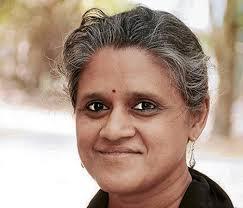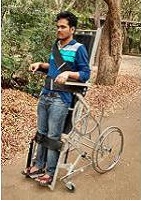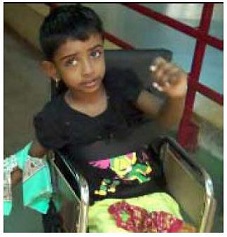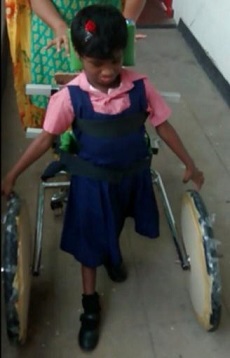
The Rehabilitation Research and Device Development (R2D2) lab at IIT Madras, headed by Dr. Sujatha Srinivasan, is involved in research related to design and development of mechanisms, products and assistive devices for people with impairments. Let’s take a look at some of their pioneering products.
Dr. Sujatha Srinivasan has established the Rehabilitation Research and Device Development (R2D2) lab (now the TTK Center for R2D2) in the Department of Mechanical Engineering at IIT Madras with a focus on assistive device development.
Her work is motivated by the millions of people in India with locomotor disability who lack access to good quality, functional assistive devices that are also affordable. The mission of R2D2 is the design and development of assistive devices to enable users to live fuller, more independent lives.
R2D2 collaborates with NGOs, hospitals and rehabilitation centres working in the field of disability. Various sources fund the projects of R2D2 - SBMT (a DRDO society), DBT, Wellcome Trust, TTK group and alumni schemes of IIT Madras.
A brief description of some of the key innovations from her lab follows:
Standing wheelchair (SWC)
For wheelchair users, standing is a necessary activity to prevent secondary problems like pressure sores. However, it is very difficult to accomplish without assistance. R2D2’s SWC design enables the user to self‐stand in the wheelchair with low upper-limb muscular effort. The design can be customized to various users with a target price of a good quality manual wheelchair. Commercialization is in progress in partnership with an industry and an NGO partner for user‐testing with funding from the Wellcome Trust (WT), UK. The goal is a certified SWC at an affordable price so that every wheelchair user can afford this device.

Body‐movement-wheelchair (BMW)
Children with cerebral palsy (CP) have no means of independent mobility. They cannot self‐operate a manual wheelchair and lack fine motor control to operate a joystick-controlled motorized wheelchair. BMW allows the user to use whatever gross body movement they are capable of – trunk, hands, head, etc. – to operate the device. The device can be calibrated within a minute to adapt to a new user. A light-weight version of this device is under development.

Saathi walker
The objective of this project is to develop a self-propelled mobility device for children with locomotor disability. Existing walkers are either too difficult for some children with Cerebral Palsy to use independently or too expensive. The project aims at developing an affordable, ergonomic independent mobility device for such children who may otherwise be able to walk only with support from a caregiver. The walker we are developing would aid children with CP to “walk” independently with minimal assistance and reduce the burden on the caregiver as well. The second prototype we are working on includes a seat and a sit-to-stand mechanism so that the child can stay in the device for longer periods of time.

Dr. Sujatha Srinivasan informed us "The Standing Wheelchair and the add-ons for outdoor mobility are expected to be commercialized within the next year. The other innovations are still in the prototype stage."
(This article has been republished here in arrangement with Connect Special, a digital magazine, which provides solutions for challenges faced by people with disability.)





